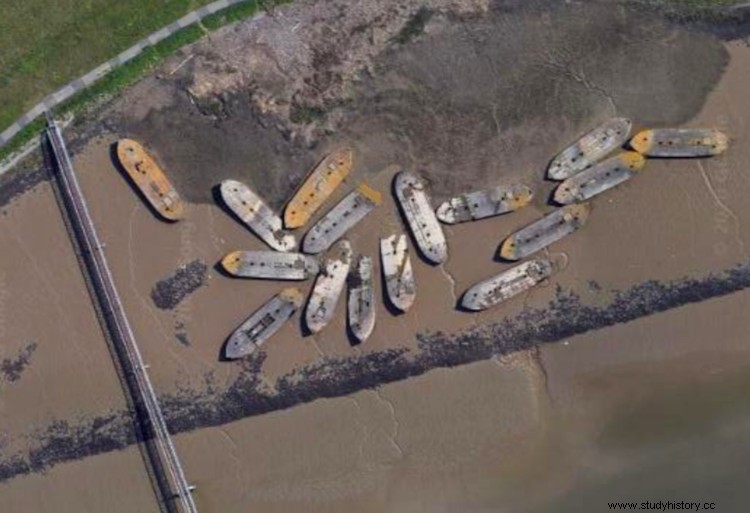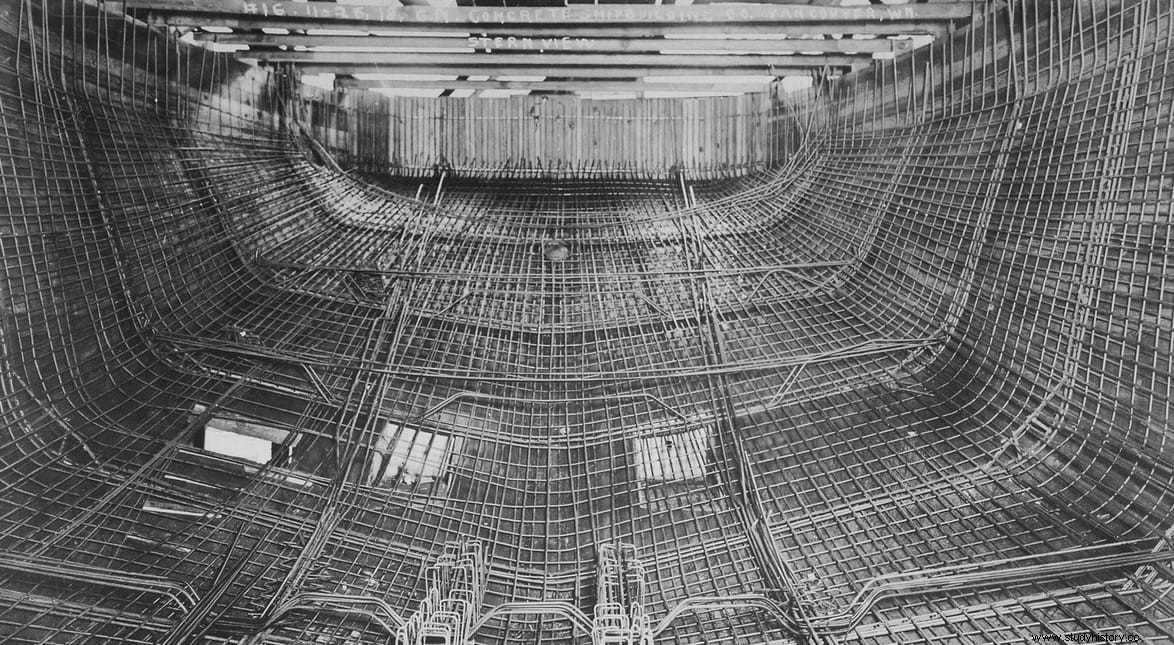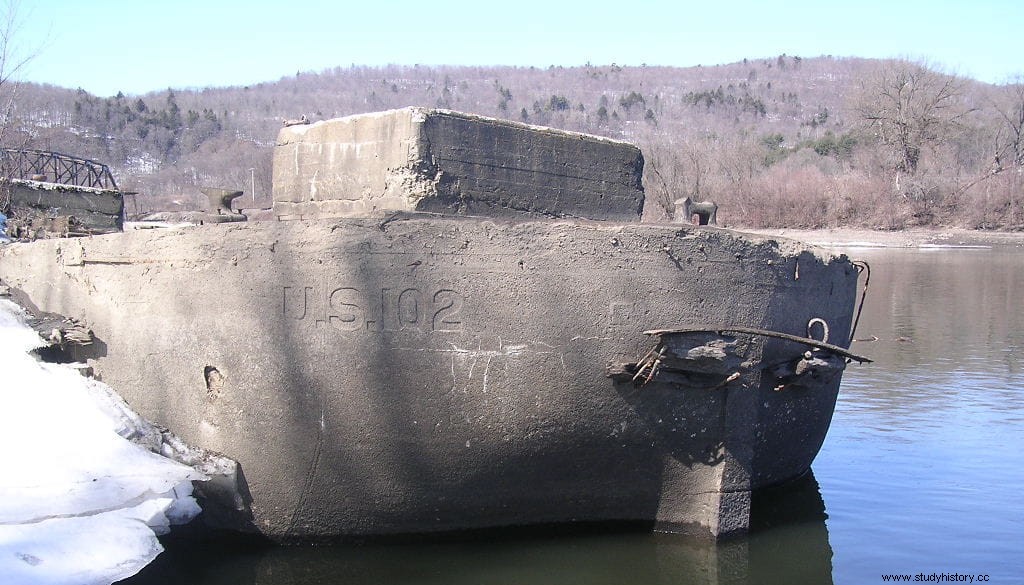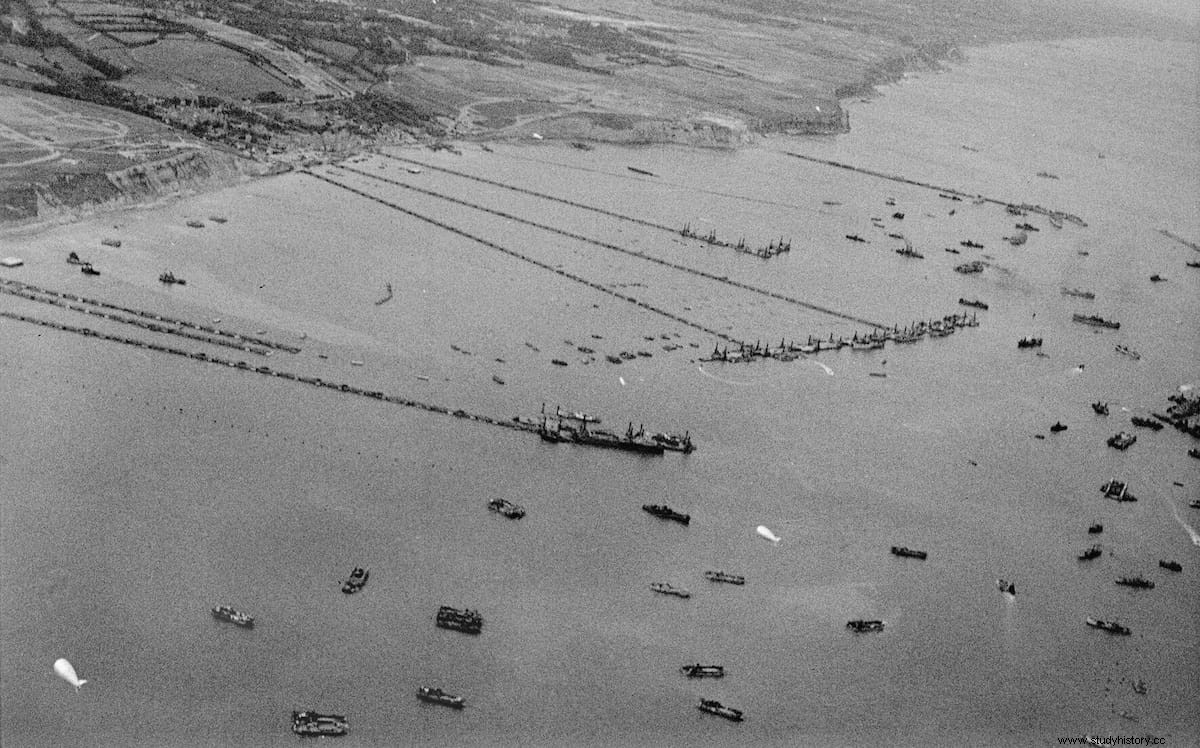One of the many legends that tell of the arrival of the apostle Santiago to the Iberian Peninsula says that he arrived at the coast of Gallaecia crossing the Pillars of Hercules by boat and then going up the Atlantic; another version tells that there were actually seven disciples moving his body.
In any case, the most fantastic thing about the story is that the trip would have been made in a stone boat. It is surprising even within its mythical tone because nothing seems more absurd than sailing in a boat made of that material. Now, what if I told you that there is a shipbuilding technique that makes concrete boats?
If you visit London and follow the Thames to the so-called Section 24 of the London LOOP, between the towns of Rainham and Purfleet (in the eastern part of the capital), you will find a most unusual corner:on the banks of the river , grouped in a certain disorder on the wet and gray sand, there are sixteen large boats that seem to sleep in oblivion, covered with mud and rust. Approaching them, you will discover with surprise that this small fleet has a very special characteristic.

Those who have arrived by car will already have a clue because the car park right there -in fact, enabled to stop to see the site- is called The Stone Barges . Translated, The Stone Barges. It is not a monument, at least in the sense that is usually given to that word, because the boats have not been carved by a sculptor; neither are they the fleet of a saint, if I may be so graceful. Its history is much more recent than that of Santiago. And harder.
Because all sixteen ships were built during World War II for the famous Normandy Landings. Moreover, these are only a small part of the dozens that were made and that, as I said before, have a singularity:they are not made of stone but are made of reinforced concrete. I emphasize, it is not that they were dedicated to transporting concrete but that their hull is made of that material so rare in the naval world. Although it is sure that more than one will be caught off guard, concrete boats are lighter than water and float.

Reinforced concrete has been used to build ships since the 19th century. The oldest documented case dates back to France in 1848, thanks to Joseph-Louis Lambot, inventor after all of the material itself. This was applied -in the maritime field- to river barges fundamentally and only at the end of the century were ships that went out to sea made; the Italian Ligurian engineer Carlo Gabellini, was the most famous. From then on, the technique was spread and generalized due to how cheap they were, although in return their construction was more complex than that of normal ships.
In the interwar period, the technique of reinforced concrete boats was abandoned when better materials were found, even cheaper and easier to treat. However, in 1942 the difficulties of the conflict and especially the shortage of steel forced it to be recovered.
Twenty-four unpowered barges designed to be towed were built in the US; a concrete submarine was even projected (!) although it never materialized, just as building larger ships did not prosper.

Since steel was to be reserved for combat ships, concrete on an iron skeleton was chosen for cargo ships, which was much cheaper and more readily available. On D-Day they were first used to transport fuel and ammunition to ships; then as soldiers' transport, beach parapets, mobile canteens, and finally Mulberry Harbor pontoons.
The Mulberry ports, so named because they looked like blackberries, were artificial infrastructures that were improvised on the French coast to facilitate the work of unloading equipment and disembarking soldiers, once the beaches had been taken. There were two:the American Mulberry A from Omaha Beach (lost in a storm) and the British Mulberry B from Arromanches (of which there are still remains). The boats, which were popularly called beetles (beetles), although their technical name was corncobs (cobs), served as pilings to support the docks, known as whales (whales).

If some of the surviving whales were later reused to repair bridges destroyed in bombing, at the end of the war most of the cobs ended up at the bottom of the English Channel or at other depths, since they were also used on the Pacific front , where they later had a secondary use as macro-fridges to keep food refrigerated in the face of high temperatures; apparently they could maintain about twelve degrees thanks to a freezer motor.
There are units scattered around the world:New Jersey, Cuba, Galveston, Ireland, Scotland, California... In Holland they are still manufactured as floating houses and on the Powell River (British Columbia) a group of them serves as breakwaters; but perhaps the most interesting, due to their curriculum, are the sixteen of the Thames:in 1953 they were taken back to England to be anchored in its bed and serve as barriers against floods.
They have been there ever since, having also acquired an extra utility:accommodation for waterfowl nests.
